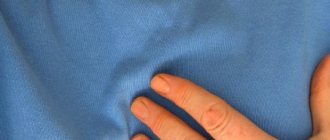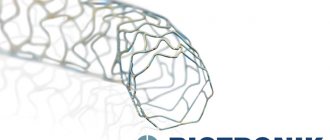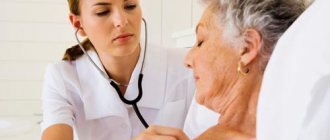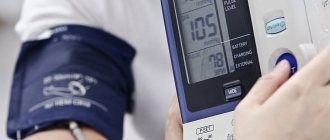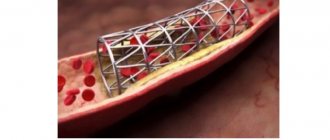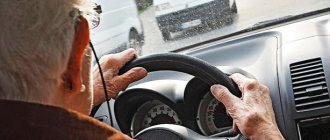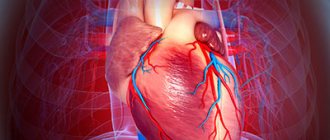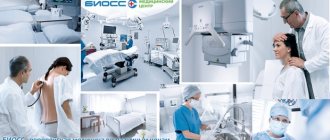If you are already familiar with the risk factors for developing cardiovascular diseases, then, of course, you know that a sedentary lifestyle and lack of sufficient physical activity leads to the accumulation of excess weight and disruption of the normal function of all organs and systems. With physical inactivity, fat and cholesterol are not completely broken down. You also know that sufficient physical activity helps fight atherosclerosis and high blood pressure. Particular attention should be paid to physical activity after a heart attack, during rehabilitation.
What are the benefits of physical activity?
- With regular physical activity, you are always in good physical shape.
- Physical activity helps increase “good” lipids in the blood, and therefore helps fight atherosclerosis.
- Physical activity reduces the blood's tendency to form blood clots.
- Physical activity helps normalize blood pressure and reduces the risk of cerebral stroke.
- Physical activity helps normalize weight and prevents the development of diabetes.
- Physical activity protects against stress and improves mood and sleep.
- Physical activity reduces the risk of osteoporosis and therefore fractures in the elderly.
As you can see, there are plenty of benefits, the list can be continued. But not all types of exercise are suitable for patients with coronary heart disease.
When atherosclerotic plaque narrows the artery supplying the heart by more than 50%, the flow of oxygen-rich blood to the heart muscle is reduced. Especially at times when the heart requires more oxygen - during physical activity and psycho-emotional stress. Oxygen starvation begins and ischemia develops. Intensive work of the heart becomes impossible, and the heart gives a distress signal, a painful attack develops - angina pectoris
.
Stationary stage
At this stage, it is not so much the physical recovery of the patient that is important, but the moral one. He must believe that not everything is lost, that a healthy lifestyle can be completely restored, that the disease has receded for a long time and there is no need to be afraid of relapses. But the desired result can be achieved only under one condition - the patient himself will make every effort and unconditionally follow all medical recommendations.
During the stationary stage of physical rehabilitation, the sick person must fully take care of himself and take walks of two to three kilometers. In addition, exercise therapy efforts should ensure:
- localization and elimination of complications that arise after prolonged bed rest. Consequences of outpatient treatment may include intestinal disturbances (atony), thromboembolism, and congestive pneumonia. Restoring movement makes it possible to restart the vital functions of the body;
- the maximum possible restoration of the performance of the cardiovascular system at the initial stage, training of peripheral circulation. In this case, the load on the heart is selected as sparingly as possible, the patient is constantly monitored;
- orthostatic stability, restoration of simple motor functions.
As soon as the patient is convinced of the progress of the results of the fight against the disease, he will have positive emotions and confidence in his future. Normalization of mental state also plays a very important role in the process of returning to a normal lifestyle.
Physical activity after myocardial infarction
Angina attacks significantly limit a person's physical activity. Medication and, often, surgical treatment are required to eliminate painful attacks. But what if you have suffered the most terrible heart attack - myocardial infarction
? Many patients develop a fear of exercise; they try to “spar” the heart, sometimes even giving up walking.
Physical activity in patients with angina pectoris, including those who have had a heart attack, has a dual meaning:
- excessive activity and high-intensity loads are dangerous because they can provoke painful attacks; they should be avoided;
- moderate physical activity, which must be performed regularly (for 30-40 minutes 3-5 times a week), on the contrary, is beneficial. They can not only increase the level of “good” cholesterol (this is important for preventing the further development of atherosclerosis), but significantly improve the condition of the cardiovascular system and prevent the rapid progression of heart failure.
According to medical studies, patients who are physically active after a heart attack are 7 times less likely to suffer recurrent heart attacks and 6 times less likely to die, compared to patients who significantly reduced their exercise after a heart attack.
Patients who have had a heart attack must perform normal household activities.
(serve yourself, do light daily housework). It is very good if, after discharge from the hospital, the patient is sent for rehabilitation to a cardiological sanatorium, where he can undergo physical rehabilitation under the supervision of doctors.
Diet
A diet after a heart attack is prescribed not only for the period of recovery and rehabilitation, but for the rest of your life. In most cases, the patient is recommended to undergo therapeutic diet No. 10 I , which includes three diet options.
The diet can be very varied, but it is necessary to prepare dishes following certain rules:
- It is necessary to significantly reduce the consumption of salt and products containing it. Salt leads to stagnation of fluid in the body, which contributes to the appearance of edema and shortness of breath. The daily norm is assigned to each individual, but on average the amount should not exceed 1 teaspoon per day .
- It is recommended to exclude fatty and fried foods, and also avoid pickles and smoked foods. The best cooking methods are: baking, steaming, boiling.
- The amount of additional fluid per day should not exceed one liter. You should not drink a lot of water after 5 pm. The maximum allowable amount at this time is 250 ml (1 mug).
- Some drinks should be avoided altogether. These include alcohol in any form, coffee and soda. The desired caffeine can be replaced with more gentle chicory.
- It is also necessary to enrich the diet with dried fruits containing potassium and magnesium: dried apricots, raisins, prunes.
The optimal amount of calories per day is 2300 Cal (the female norm is slightly lower, no more than 2000). However, it is important to follow a diet, dividing the total number of calories into 4-7 small meals . Products also need to be selected carefully. The diet must be composed of:
- berries, vegetables and fruits;
- plenty of fresh herbs;
- fermented milk products;
- lean fish (required);
- seafood;
- poultry meat with the addition of vegetable oil, preferably olive;
- lean meats;
- cereal crops.
It is recommended to reduce the amount of sugar and fast carbohydrates consumed as much as possible. There is little benefit to the body, but the harm after surgery may be much greater.
If you are overweight, it is recommended to follow a calorie deficit diet to bring your body weight back to normal. Heavy weight significantly increases the load on the heart muscle.
Recommended products for diet I-III:
- pureed vegetable and cereal soups (during diet III, they can be prepared in light meat broth);
- lean fish;
- veal;
- chicken meat (without fat and skin);
- cereals (semolina, oatmeal, buckwheat and rice);
- steamed egg white omelette;
- fermented milk drinks;
- low-fat sour cream for seasoning soups;
- butter (with a gradual increase in its quantity to 10 g by the third period);
- skim milk for adding to tea and porridge;
- wheat crackers and bread;
- low-fat sour cream for seasoning soups;
- refined vegetable oils;
- vegetables and fruits (initially boiled, then it is possible to introduce raw salads and purees from them);
- rosehip decoction;
- fruit drinks;
- compotes;
- jelly;
- weak tea;
- honey.
It is necessary to exclude foods from the diet:
- fresh bread;
- baking and baked goods;
- fatty meat dishes;
- offal and caviar;
- canned food;
- sausages;
- fatty milk products and whole milk;
- egg yolks;
- barley, pearl barley and millet;
- legumes;
- garlic;
- White cabbage;
- turnips and radishes;
- cucumbers;
- spices and pickles;
- animal fats;
- margarine;
- chocolate;
- grapes and juice from them;
- cocoa and coffee;
- alcoholic drinks.
Rehabilitation at home
However, if you do not end up in a sanatorium, physical rehabilitation can and should be carried out independently. The easiest way is to walk every day. You need to choose a rhythm that is comfortable for you, slow or moderate, and go for walks at least 5 times a week for 30-60 minutes. If you feel tired or weak, sit down to rest or return home. In just a few days you will be able to walk further.
The load should not lead to the development of an attack of angina pectoris
or severe shortness of breath and palpitations, only mild shortness of breath is acceptable.
Monitor your pulse;
during exercise, your heart rate should definitely increase. At the first stage, achieve a small increase of 20-30% (for example, 15-20 beats per minute). In the future, if you have good exercise tolerance, continue to monitor your pulse and do not allow the value to exceed 200 - your age (for example, you are 56 years old: it is not advisable for your pulse to exceed 200-56 = 144).
According to the recommendations of Russia’s leading specialist in the rehabilitation of patients with heart disease, Professor D.M. Aronova, depending on the severity of angina manifestations (functional class), there are different acceptable types and volumes of physical activity.
Below are tables developed by prof. D.M. Aronov, by which you can determine the physical activity possible for you. We remind you that angina is divided into 4 functional classes, I f.k - the mildest, when angina attacks develop only during high-intensity loads, IV f.k. the most severe - an attack can develop at the slightest physical exertion and even at rest. The sign (-) indicates loads that are not permitted. (+) – activity is allowed, the number (+) reflects the volume or intensity of the load performed.
Contraindications for exercise therapy
Physical therapy, as well as some other methods of auxiliary therapy, should be carried out after a thorough examination of the patient. Classes are contraindicated in the following cases:
- temperature rise;
- fever;
- pain of any nature in the heart;
- difficulty breathing, wheezing;
- pulmonary edema;
- circulatory failure;
- deterioration of ECG parameters;
- cardiogenic shock.
If there is a disturbance in heart rhythm even when taking medications, exercise therapy is not performed. However, the patient can carry out light actions on his own: move his toes, hands, bend them at the knee, elbow. There is so-called finger gymnastics, which the sick person performs without the risk of developing complications.
Normal physical activity (acceptable load)
| Type of activity | Function class | |||
| I | II | III | IV | |
| Run | ++ | + | — | — |
| Walking: Fast (130 steps/min) Medium (100/120 steps/min) Slow (<= 80-90 steps/min) | +++ +++ +++ | ++ +++ +++ | — ++ +++ | — — — |
| Climbing stairs (floors) | 5 or more | up to 5 | 2-3 floors | — |
| Carrying heavy loads (kg) | 15-16 | 8-10 | 3 | — |
| Having sex | +++ | ++ | + | — |
Housework after a heart attack
| Type of activity | Function class | |||
| I | II | III | IV | |
| Sawing | + | — | — | — |
| Working with a hand drill: comfortable position, uncomfortable position | ++ ++ | + — | — — | — — |
| Working with a vacuum cleaner | ++ | + | — | — |
| Washing vertical surfaces (windows, walls, cars): comfortable position, uncomfortable position | ++ + | + — | — — | — — |
| Wiping dust | +++ | +++ | ++ | + |
| Washing dishes | +++ | +++ | ++ | + |
| Washing: comfortable position, uncomfortable position | ++ + | + — | — — | — — |
| Sewing, embroidery | +++ | ++ | + | — |
